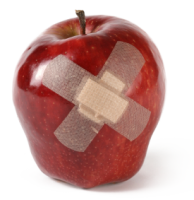The American ski racer Lindsey Vonn has a long list of victories and honors to her credit. In addition to the gold and silver medals she won in previous Olympic Games, the blond athlete also won the World Cup title four times. Anyone who knows about Lindsey’s childhood will soon understand why she was predestined to become a skier.
Lindsey was already hurtling down ski slopes at the age of two, later attending special training camps for talented young skiers. Her father certainly made a huge contribution to her success by moving with her to the winter sports resort Vail in Colorado to allow her to train on a daily basis.
Lindsey’s love life and not just her sporting records have made her the center of media attention. Since it became known that the American divorcee had started a relationship with the very go-getting professional golfer Tiger Woods, the gossip factory is working overtime and her sporting achievements fade into the background. The fact that Lindsey ruptured the cruciate ligament and injured the bone in her right knee last spring probably also played a role in this respect.
Despite the sports injury and knee operation, for a long period she was convinced that she would be able to take part in Sochi and take home a second gold medal. However, joint injuries require rest, so Lindsey was regretfully forced to withdraw: “I am devastated to announce that I will not be able to compete in Sochi. I did everything I possibly could to somehow get strong enough to overcome having no ACL but the reality has sunk in that my knee is just too unstable to compete at this level,” Lindsey told her fans on Facebook.
The ambitious sportswoman now wants to be fit enough to start ski racing again by 2015. Because of the surgery she had on her knee, Lindsey won’t be able to do any hard training for a good while and will be undergoing physiotherapy instead. But, what else could the top athlete do in order to speed up the healing process and race down the slope again next year?
A large number of studies conducted worldwide document the important role that so-called mesenchymal stem cells (MSC), the progenitor cells of connective tissue, play during the regeneration of joint injuries, cartilage damage, arthritis and torn muscles. Every person has rich deposits of these stem cells in his or her fat tissue. Stem cell therapy has the potential to shorten the normally relatively long healing process for these injuries and to reduce pain.
When stem cell therapy for joint problems is carried out, a small amount of fat is first suctioned off using liposuction with microcannulas, and mesenchymal stem cells are extracted from it. The stem cells obtained in this way are then immediately injected into the affected areas, for example, on knees, shoulders, hips, hands or fingers, or they are administered as an infusion. Since treatment takes place on an outpatient basis using local anesthesia, the patient remains mobile throughout.
The regenerative effect of treating joints with the autologous stem cells from fat and the pain relief associated with it should begin several weeks after treatment. Thanks to faster healing, Lindsey Vonn might be able to get ready for her 2015 comeback more quickly and remind the world that her sporting career is far more interesting than her private life.
In the meantime, Lindsey at least has more time to cheer on her partner and to watch him winning live in person, which, of course, she could hardly manage to do when competing herself. Her fans will definitely be pleased about the photographs, where the pair can be seen side by side.
DDr. Heinrich, MD
